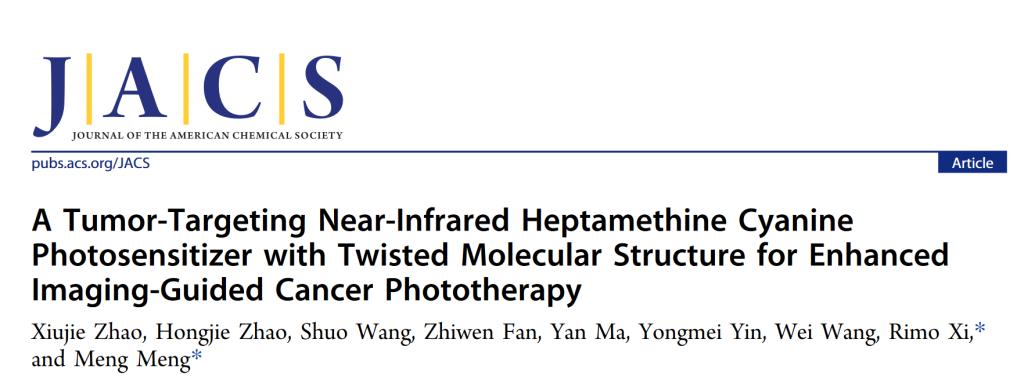Title:A Tumor-Targeting Near-Infrared Heptamethine Cyanine Photosensitizer with Twisted Molecular Structure for Enhanced Imaging-Guided Cancer Phototherapy
Authors: Xiujie Zhao, Hongjie Zhao, Shuo Wang, Zhiwen Fan, Yan Ma, Yongmei Yin, Wei Wang, Rimo Xi*, and Meng Meng*
Publication: Journal of the American Chemical Society

Abstract:
In recent years, cancer phototherapy has been extensively studied as noninvasive cancer treatment. To present efficient recognition toward cancer cells, most photosensitizers (PSs) are required to couple with tumor-targeted ligands. Interestingly, the heptamethine cyanine IR780 displays an intrinsic tumor-targeted feature even without modification. However, the photothermal efficacy and photostability of IR780 are not sufficient enough for clinical use. Herein, we involve a twisted structure of tetraphenylethene (TPE) between two molecules of IR780 to improve the photothermal conversion efficiency (PCE). The obtained molecule T780T shows strong near-infrared (NIR) fluorescence and improved PCE (38.5%) in the dispersed state. Also, the photothermal stability and ROS generation capability of T780T at the NIR range (808 nm) are both promoted. In the aqueous phase, the T780T was formulated into uniform nanoaggregates (∼200 nm) with extremely low fluorescence and PTT response, which would reduce in vivo imaging background and side effect of PTT response in normal tissues. After intravenous injection into tumor-bearing mice, the T780T nanoaggregates display high tumor accumulation and thus remarkably inhibit the tumor growth. Moreover, the enhanced photostability of the T780T allows for twice irradiation after one injection and leads to more significant tumor inhibition. In summary, our study presents a tumor-targeted small-molecule PS for efficient cancer therapy and brings a new design of heptamethine cyanine PS for potential clinical applications.